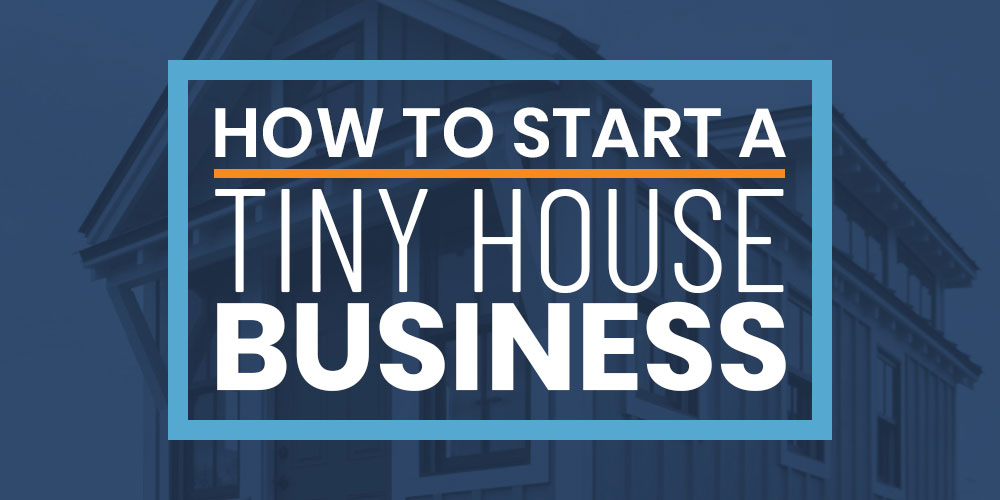
NAVIGATION
When I first got interested in tiny houses, I never dreamed that it could grow to be a thriving business. But after a decade of success, it’s pretty clear to me that it’s not only a good business to be in, but one that has proven itself to be a profitable and meaningful line of work.
The tiny house movement is growing faster than ever and that has led many to be interested in starting a tiny house business. There is a lot that goes into starting any business, but the profitable niche of the tiny house market makes it a worthwhile venture.

Hi, I’m Ryan
When I started The Tiny Life, my only real intention was to share my experiences with other tiny-living enthusiasts. I quickly realized that there was so much potential to be uncovered in the space, and never looked back. Still, if I were to start all over again, here’s the advice I’d share with my younger self.

Market Data About Sales In The Tiny House Industry?

Even through economic downturns and pandemics, the tiny house industry has been growing consistently for many years.
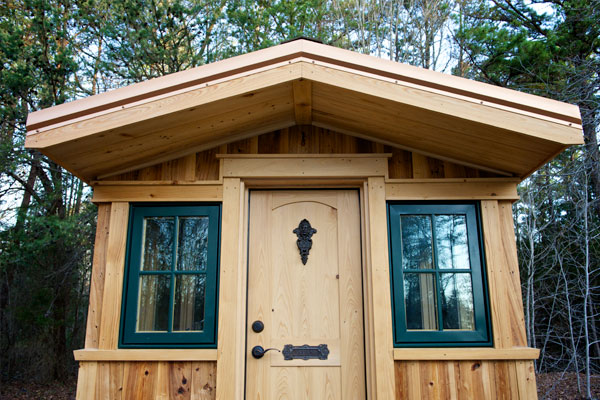 What is interesting is that, when times are good, tiny house businesses are good. When things aren’t so great, people look to tiny homes as a solution. Because of this, tiny houses usually see a lot of growth, even in recessions.
What is interesting is that, when times are good, tiny house businesses are good. When things aren’t so great, people look to tiny homes as a solution. Because of this, tiny houses usually see a lot of growth, even in recessions.
Tiny houses have become a saving grace for the specific pain points of families, young professionals, young married couples, the elderly, and retirees in America and around the globe. There are many reasons that have been catalysts for tiny house market growth in recent years.
Tiny House Market Size
Studies estimated the tiny house market size to be worth $20.47 billion last year. Projections over the next 10 years have predicted the tiny house market size will be worth $25.16 billion with a CAGR of 3.5% during the review period. Year over year, there has been a 67% increase in tiny house sales.
There is a lot more data that can take you further into the details here, all of which I’ve shared in this free market report.

10 Steps To Start A Tiny House Business

There is some standard advice that you’ll see offered around starting any business, and while it can be tempting to skip ahead, planning can go a long way for one major reason.
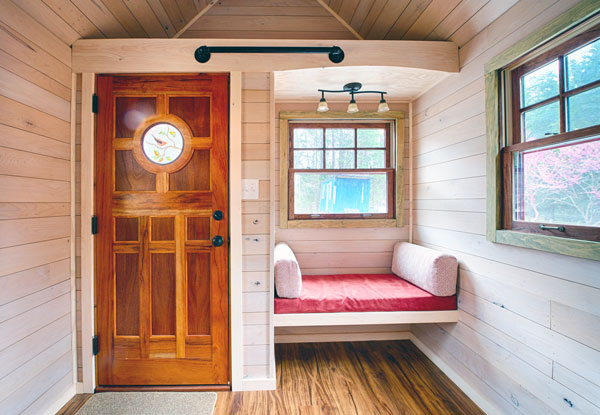 The Tiny Life isn’t my only successful business — in fact, I’ve had multiple ventures where I’ve taken profitable exits or still run today.
The Tiny Life isn’t my only successful business — in fact, I’ve had multiple ventures where I’ve taken profitable exits or still run today.
But I have lost count of the business concepts I’ve considered that I realized weren’t going to produce enough profits to be worth it after going through this process!
If you spend some time planning now, you could save yourself from going in the wrong direction or have a really tight plan of action that will lead you to success — either way it’s a win.
1. Utilize Business Model Templates To Validate Your Idea
A business model for a tiny house business lets you flush out the core ideas involved with the business before you develop further plans. What I like about this step is that I can review the key elements, which helps me do some “back of the napkin” math to see if the venture is even worth pursuing.
Sometimes you get into the numbers and realize you’ll need so many sales that it’s not practical, or that the profit margins are so slim, it’s not even worth starting. Other times, it helps you get clear on what needs to be achieved in order to make the business successful.
Before you make any major decisions, take a moment to fill out this tiny house business model template to make sure you’re heading in the right direction.

2. Develop A Tiny House Business Plan (Free Download)
Once you’ve nailed down the basics in your business model template, it’s time to start developing a tiny house business plan. This brings more details to the high-level ideas you identified in your model.
Broadly speaking, a tiny house business plan is going to be very similar to any other business plan, but it helps you define what you’re going to sell, who you’re going to sell it to, how much you’ll price things at, and how you’ll market to people so they’re aware of you.
Below I get into more details on the different parts of a tiny house business. Each of these areas are fairly complex, but I’ve put together a free download for you to make the process simpler.
Free Business Plan Template Download
Advice: Define What You’re Going To Sell
You need to gain clarity on what specifically you are going to offer as a product or service. I’ve learned a few key things here:
What you think people want and what people actually want may be two different things, so you’ll need to adapt along the way.
Focus on your strengths and build your offerings around those.
Do a few things well and market to a select group of customers — being everything to everyone leads to failure.
Advice: Determine Your Pricing, Costs and Profit
On its face it seems simple: cost – price = profit. But getting a true sense of your cost, being realistic with what people will pay, and having a profit that doesn’t just pay the bills but also grows the business is harder.

It’s easy to make numbers work on paper without the realities of the market. Make sure that you have a realistic path to profitability, that you can actually sell the amount you need, and the customers are actually willing to pay that price for it.
Keeping all of your ideas, documents, and strategies organized in a way that maximizes your efficiency is key to creating a successful business model. There are tons of tools I put to use when managing The Tiny Life.
Throughout my time running The Tiny Life and working in the corporate world in general, I’ve learned that any business move you make leads to sacrificing one or both of your most valuable tools: time and money.
When running a business, you want to set yourself up to increase revenue while using less of your time. This means you need efficient business tools to help your company move from idea to execution more quickly without sacrificing quality.
3. Come Up With A Memorable Tiny House Business Name
The name of your business is one of the most important elements of your business model. A company name is the backbone of a business and the first word potential clients or paying customers will associate with you and your product.
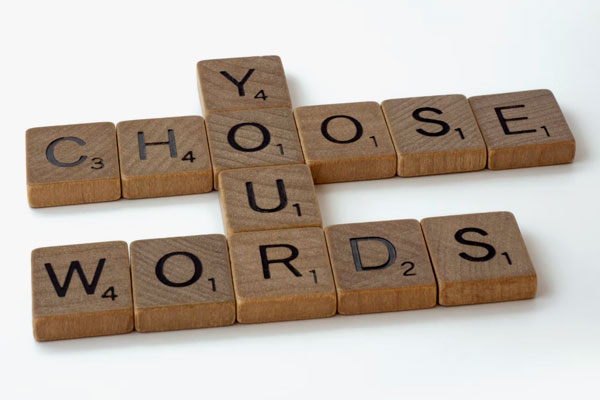 When brainstorming names for The Tiny Life, I spent a lot of time thinking about what message I wanted to send to people interacting with my business for the first time. I knew that, while my original point of interest was tiny homes, I wanted my business to be about much more than that.
When brainstorming names for The Tiny Life, I spent a lot of time thinking about what message I wanted to send to people interacting with my business for the first time. I knew that, while my original point of interest was tiny homes, I wanted my business to be about much more than that.
I wanted a company name that not only spoke to house size, but also encapsulated the idea that life can be simple, small, and self-made. This brought me to the name The Tiny Life.
When searching for your tiny house business name, think about the things that make your company unique. What about your company’s mission, backstory, location, or origin could be turned into a meaningful, eye-catching business name?
“Check to see if your business name is available as a domain name before deciding. If it already exists, consider other names or try alternative spellings, add a modifier, put an adjective in front of it, etc.”
– Ryan Mitchell, TheTinyLife.com
I’ve known several business owners who have named their company after something special about their history with tiny homes — why they matter to them or even where they build their properties.
4. Create A Website For Your Tiny House Business
To make sales as a tiny house business owner, you’ll need a good-looking landing page where customers can find out more about you and get in contact. You don’t have to be tech savvy to make this happen — it doesn’t have to be fancy, just effective.
The biggest mistake I see often is businesses trying to use a Facebook page as their website. A single-page site built on the Google Site platform or Squarespace will serve you much better. Have your logo and name at the top, one single header image that makes an impact, list your contact info, and then include samples of your work in a gallery.
“Don’t skimp on photos! They say a picture is worth a thousand words — in business, a picture is worth thousands of dollars. Consider working with a professional photographer to make sure your product photos are well lit, properly staged, totally finished, and polished.”
– Ryan Mitchell, TheTinyLife.com
After setting up your tiny house business website, you’ll want to register your own domain name. Websites with URLs like thetinylife.wix.com or thetinylife.wordpress.com look far less professional than thetinylife.com.
5. Set Up Social Media Accounts And Forms Of Contact
One of the worst moves you can make as a small business owner is neglecting to set up an easy way for customers, partners, or clients to get ahold of you. You want to make it as simple as possible for people to reach you.
I have an email that is specifically for The Tiny Life as well as a personal email address that I manage completely separately. For a small monthly fee, you can attach your email address to your domain name, which looks more professional than an address connected to Gmail or Yahoo.
In addition to a company email address, you should also set up a company phone number that is separate from your personal phone. This way, you know when a customer is trying to get ahold of you verses your in-laws calling you up to chat. For this I use Google Voice or Ring Central to have a virtual number just for the business.
Social Media
You should also create a handle for any forms of social media you want to actively associate with your business. Even if you aren’t going to post, go ahead and secure those names now on the major platforms so no one else can take them — or worse, impersonate you.
 When it comes to social media, a mistake I see from new business owners is trying (and often failing) to be exceptional at using every form of social media in order to stay relevant in this day and age. For me and several of my friends who own tiny house businesses, this has not been the case at all.
When it comes to social media, a mistake I see from new business owners is trying (and often failing) to be exceptional at using every form of social media in order to stay relevant in this day and age. For me and several of my friends who own tiny house businesses, this has not been the case at all.
It is much more effective to funnel your time and energy into the kinds of media you enjoy and are good at than to waste your time on something that may not bring you any reward. In my case, I absolutely despise Instagram, so I don’t deal with it. Simple as that.
Focus on the forms of social media that you enjoy and that reflect the demographic you’re trying to serve. The type of people who find my content are often seeking minimalism and simplicity, thus they don’t have a huge social media presence. However, I find they do use Pinterest fairly often because of the DIY nature of my market, so I focus a lot of my media presence there.
6. Focus On The Visual Elements Of Your Tiny House Business
The visual elements of your tiny house business are far more important than you might initially assume. I think a lot of business owners get it in their head that as long as the product they offer is high quality, the visuals don’t really matter that much. This couldn’t be further from the truth.
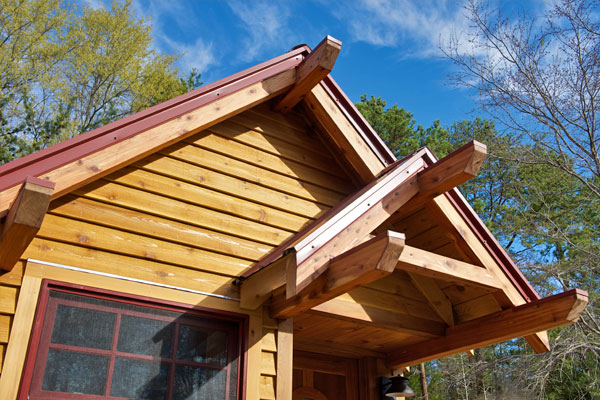 Think about it: Your website, brand font, logo, images — these are the very first impressions of your business that a potential client or customer is coming in contact with.
Think about it: Your website, brand font, logo, images — these are the very first impressions of your business that a potential client or customer is coming in contact with.
In the first few seconds of interacting with your website, logo, or image, potential customers are making an assumption in their minds about whether or not your brand is one they can trust and want to work with.
This means visual representation is extremely important. But that doesn’t mean you need to pour a ton of money and fancy resources into your branding. There are tons of resources out there that can help you with fonts, logos, color schemes, graphics, and more for a low price.
It is possible to create a website and logo that look professional without breaking the bank.
Small Business Logo Makers
7. Get Your Finances Straight For Your Tiny House Business
The financial aspect of owning a business is a huge can of worms that could be an entire blog post of its own. I won’t claim to be an expert on financial management, but I do think I’ve learned a ton over the past decade about what to and what not to do when managing money on such a large scale.
Go In With A Plan

Get comfortable with using a spreadsheet to document all the costs that go into your business. Then estimate your income from sales and map out how many sales you actually need to cover costs. The difference between your cost and income is your profit.
One thing I learned was that making a profit isn’t just paying my bills, it’s much more.
Know Your Costs

Building out a budget that captures all these little details is daunting at first, but it will ensure you don’t get stuck in a bind later. You will never do it perfectly, but if you are diligent, you can adapt and refine over time.
The Rule Of Three

For every dollar I need to pay myself, I need $1 to sink back into the business to grow it (think supplies, tools, etc.). I also need $1 to spend on marketing to continue to build my sales pipeline. So, if I needed $3,000 to pay myself per month, I would price my products and services at a profit margin that will yield a total of $9,000 per month.
That is a real quick way to think about it. Ultimately, you’ll need more sophisticated models, but that simple rule of thumb lets me quickly understand if my pricing is going to work for me and the business.
Be Smart About Your Budget
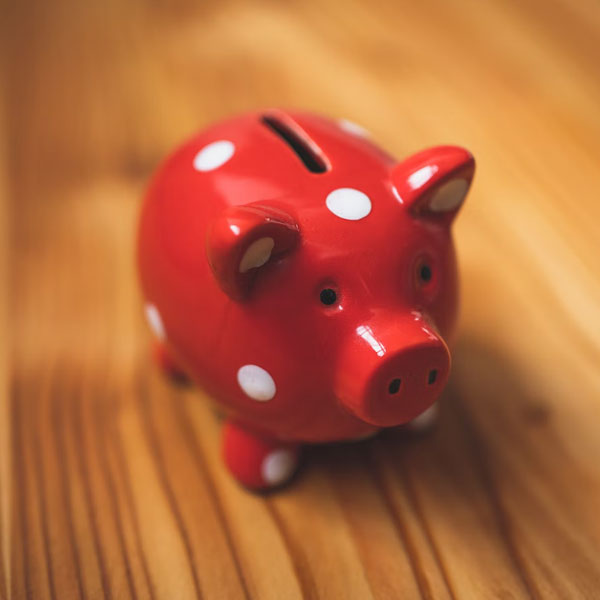
You also need to have a budget and keep records of all your financials. This is important to understand true costs of your business, manage and plan cashflow, handle payroll, and make all the appropriate tax deductions.
The last thing I’ll say on this is that you should have both a personal rainy day fund and an emergency fund for the business, and avoid accruing debt where possible.
8. Make Your Tiny House Business A Legal Entity
Forming a legal entity for your tiny house business is a must in order to protect you from being held personally liable if your business is sued. It is also a much wiser financial move to establish yourself as a legal entity when managing your bank account and taxes each year.
There are multiple business types that you can register your company as. The most common business structure types are the limited liability company (LLC), a corporation, a sole proprietorship, or a partnership. When I was first setting up The Tiny Life, I decided to go with an S Corp as my company type, but there are advantages and disadvantages to each choice.
9. Define Your Processes: Sales, Marketing, & Operations
Process is boring. Until you realize that it makes you more money, produces happier customers, closes sales easier, keeps your team engaged, and allows the business to thrive. There isn’t anything boring about having customers clamoring to work with you, a team that is excited to do the work, and work that is low stress.
There are key aspects of your business that you should build a plan for
- Product Or Service Delivery
- Marketing/Sales
- Finances And Budgeting
- Employees
- Internal Operations

10. Determine How You’ll Market To Your Target Customer
Too many tiny house business owners think that if they set up a website, hand out a few business cards, and post occasionally on social media, customers will just magically appear.
What really needs to happen, though, is you need to go out and get those customers.
The task of marketing is a huge part of what makes a business successful. You can’t be profitable without customers, you can’t get customers without making sales, and you can’t make sales without having effective marketing.
While having a quality product or service is a pre-requisite, marketing is the top of the sales funnel and it drives everything else.
In the planning phase of your marketing strategy, you need to answer
- How are you going to make people aware of your business?
- How will you foster that awareness into them considering your offering?
- How do you move them from a casual browser to a paying customer?
Bonus: Define Professional Partnerships To Achieve Your Goals
Paid partnerships or sponsorships are another awesome way to create mutually beneficial business relationships, or relationships where both parties end up winning in some way. These kinds of relationships are built on the fact that both parties are able to bring value to the table.
 Partnerships like this can exist in exchange for many kinds of value, including money, time, skill, recognition, or an additional kind of resource.
Partnerships like this can exist in exchange for many kinds of value, including money, time, skill, recognition, or an additional kind of resource.
Broadly speaking, it can be difficult to find monetary partnerships where the two parties are not inherently equal sized players.
My best advice when navigating these kinds of relationships is to be candid from the beginning about what you have to offer and what you are hoping to gain in return.
Tiny House Business Ideas: Types Of Tiny House Businesses

It’s important to note that there are many different ways you can make a profit within the tiny house industry. This includes designing, building, selling, or flipping homes, creating rental properties, and more. All of these types of tiny house businesses can be profitable when executeed well.
Business Ideas Section Navigation
How To Start Building And Selling Tiny Homes
Building and selling tiny homes is the most common type of tiny house business. Of course, this can take on many different forms.
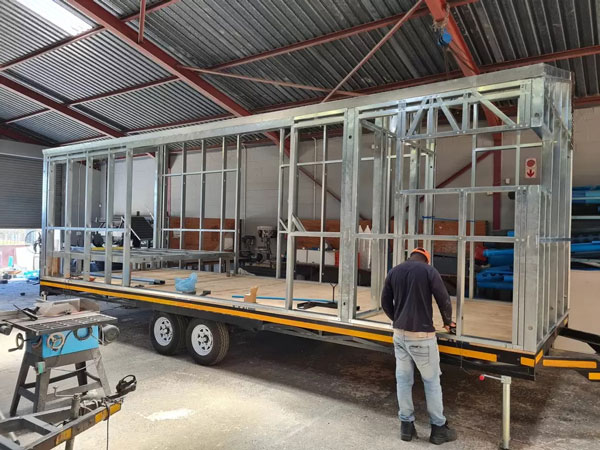 In some cases, tiny house builders are housing companies that have decided to add tiny homes to their lineup. In other cases, companies are created for the specific intent of building and designing tiny houses.
In some cases, tiny house builders are housing companies that have decided to add tiny homes to their lineup. In other cases, companies are created for the specific intent of building and designing tiny houses.
As the tiny house movement has increased in popularity, more design and build companies are popping up all across the U.S., particularly in high-interest states like California, Texas, Florida, Oregon, and Colorado. If you’re hoping to start this kind of business, consider what your needs are to execute.
Take a look at the team you’re building your business with. Do you have someone on your team who can help with construction, carpentry, plumbing, electrical, interior design, or painting and finishes?
Will you be able to manage your own finances and legal documents or will you need help? Consider the vital roles you’ll need to hire out when budgeting as a new building company. How are you going to conduct sales and market your services?
Is Building And Selling Tiny Homes Profitable?
For all the reasons described above, building and selling tiny houses is a highly profitable investment. The average wholesale cost of a tiny home is around $23,000 when considering materials, labor costs, utilities, and everything else that goes into the tiny house building process.
Say you’re able to build a basic tiny home for the price of $23,000, then sell it for $56,000 — an extremely reasonable asking price in today’s market. With this system, you’ll earn a net profit of $33,000 per sale.
If you’re able to make this happen a mere five times a year, that brings you to a net profit of $165,000 annually selling tiny homes. That’s a fairly large profit considering the resources invested.
| Revenue Per Sale | Cost Of Supply Per Sale | Net Profit Per Sale |
|---|---|---|
| $56,000 | $23,000 | $33,000 |
*Note: Figures are estimates
Of course, your average annual income will depend on how successful your tiny house building business is. The amount of homes you are able to sell will determine whether or not your business is a worthy investment. Data reflects that the average annual income for a tiny house design and build company is around $274,000, which reflects about 8.3 tiny house sales.
Tiny home building businesses also scale very well. Tiny homes can be built in a production environment without being affected by common things that negatively impact traditional building.
There are no rainy days when you build inside a workshop — you can climate control the space to ensure productivity of your workers and considerations like being warm enough for paint to dry. You can also optimize production lines for efficiency without having to break down a job site at the end of every day. Lastly, the scale of tiny houses means you can likely maintain a small inventory of materials on site to avoid delays.
How To Start A Tiny House Design Business
Right up there in popularity with building and selling tiny houses is consulting and design. There are several tiny house businesses across the U.S. that, instead of undertaking the build process, help their clients design their tiny homes, get connected with builders, and navigate the legal ramifications in order to build their tiny house.
Is Tiny House Design Profitable?
Many of these tiny house design businesses end up partnering with builders directly. This is a wise way to establish a professional partnership where you both can benefit financially.
| Monthly Consultation Revenue | Monthly Supply And Technology Cost | Monthly Profit |
|---|---|---|
| $2,800 | $950 | $1,850 |
*Note: Figures are estimates
I’ve based the estimated profit in the chart above on the average cost per consultation of several U.S. tiny house consultation companies. Remember that this estimate is purely based on legal and design consultations and does not include building or selling tiny houses.
How To Start A Tiny House Rental Business
The travel industry is booming due to the increase in remote work. A decade ago, Airbnb was hardly on the map, but now it is an extremely lively marketplace and profitable business — so much so that they launched a company-wide upgrade in 2021 focused on the increase in remote workers.
While there are hundreds of thousands of tiny homes on Airbnb and other rental sites for frequent vacationers, the uptick in remote working has also increased the number of long-term stays needed across the country. Workers and families alike are renting condos, apartment spaces, accessory dwelling units, and even eclectic stays like trailers or RVs.
All this to say, there has really never been a better time to start a tiny house rental business.
Are Tiny House Rentals Profitable?
Again, the net profit that you are able to gain here will depend heavily on how much you pour into building your tiny house as well as what price you rent it out for.
| Annual Revenue | Yearly Cost Of Supply | Annual Net Profit |
|---|---|---|
| $13,250 | $1,850 | $11,400 |
*Note: Figures are estimates
Keep in mind that this chart does not include the initial building costs of the tiny home. It does, however, include the annual supply cost of upkeep, utilities, and repairs.
Additionally, this is the estimated profit for renting out a single tiny house that performs well in the traveler’s market with frequent bookings, borrowed from the Robuilt company. If you have multiple properties or are not able to gain customers as readily, that will heavily affect what you’re able to earn.
How To Start A Business Flipping Tiny Houses
Flipping tiny house properties is a whole different financial ballgame than building them yourself or renting them out. The idea of starting a property-flipping business is often highly attractive to people who enjoy bringing older properties into their full potential.
If you’re looking to break into this kind of business, you’ll want to evaluate what skills you’ll need to be successful and whether or not you already have access to those or will need to hire help. You’ll also want to ensure you have someone on your team who understands property values and can accurately assess repair expenses.
Is Flipping Tiny Houses Profitable?
When it comes with flipping homes, I think there’s a common misconception that it’s going to be far easier and cheaper than building a house from the ground up, but this isn’t always the case. Sometimes the cost of repairing an older property can skyrocket just as quickly as building a new home.
That said, many people are able to turn flipping homes into a business or side hustle. These businesses often succeed with THOWs because they can find a good deal anywhere, bring it to their own facility to update, then sell to anyone with a delivery fee.
| Average Annual Revenue | Average Invested Cost | Average Annual Profit |
|---|---|---|
| $67,000 | $37,000 | $30,000 |
*Note: Figures are estimates
Data from Smart Asset reveals that house flipping continues to be a highly profitable endeavor. The average invested cost reflects the price of the property as well as anticipated repairs and renovations. These earnings are based on data from businesses, though, and would look very different if you were just planning to flip a single property.
What Other Small Businesses Can You Run Using Tiny Homes?
Not only are tiny homes a valuable commodity for selling, renting, or flipping, but they can also be used as an office space for a myriad of other small businesses. Tiny houses on wheels, van conversions, cargo trailers, and teardrop shops are some of the best options if you own a traveling business and need to transport your goods and services across state lines.
Business Ideas For Tiny Houses
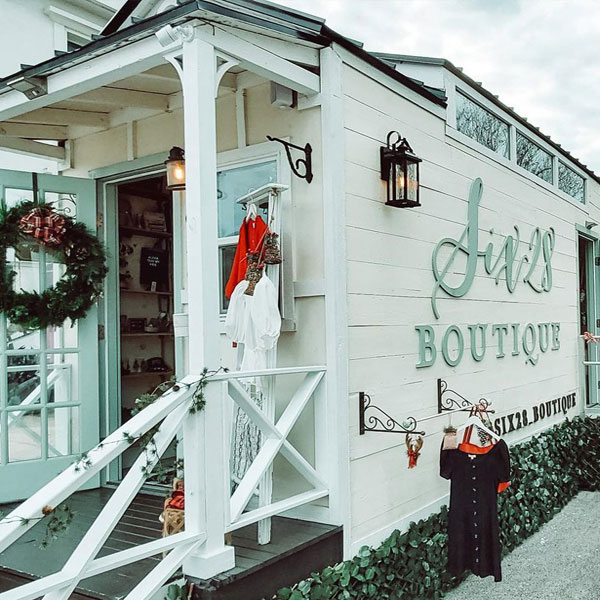
Boutique Business
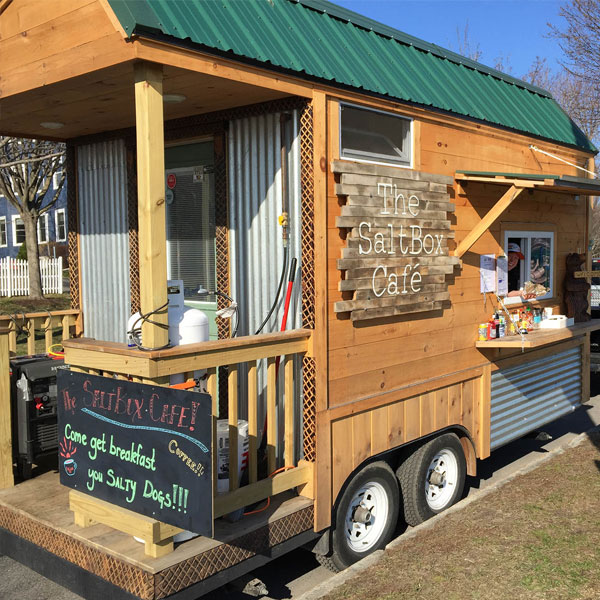
Food Truck
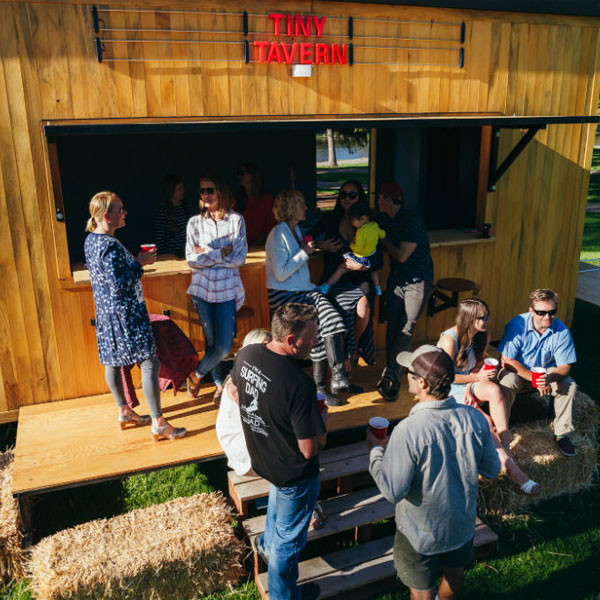
Mobile Tavern
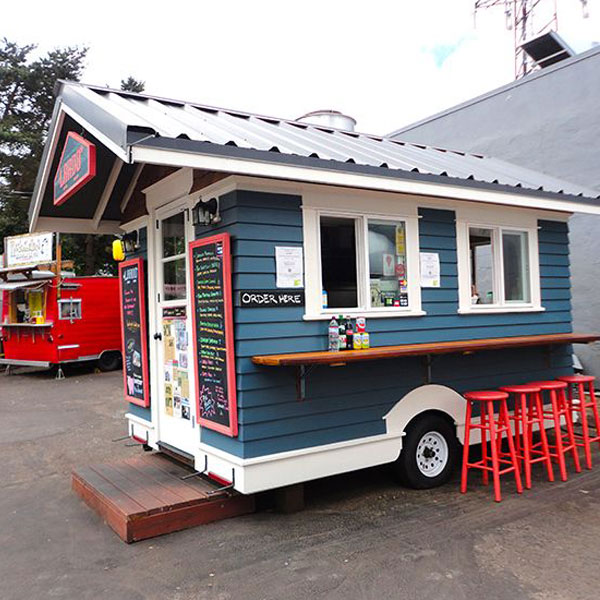
Coffee Shop
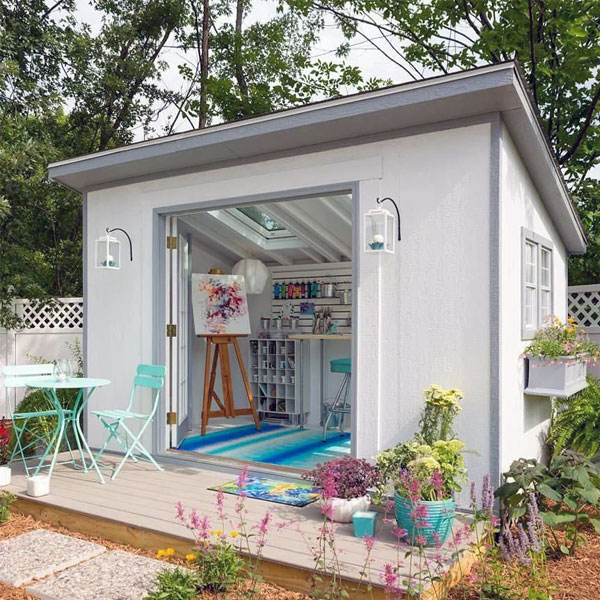
Art Studio
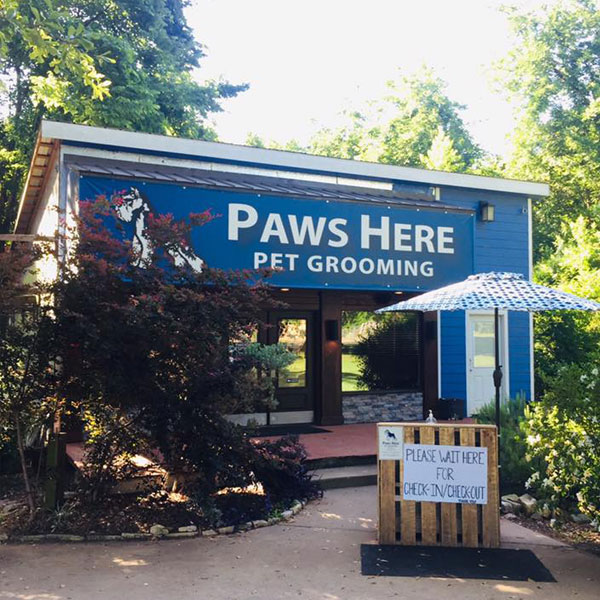
Pet Grooming
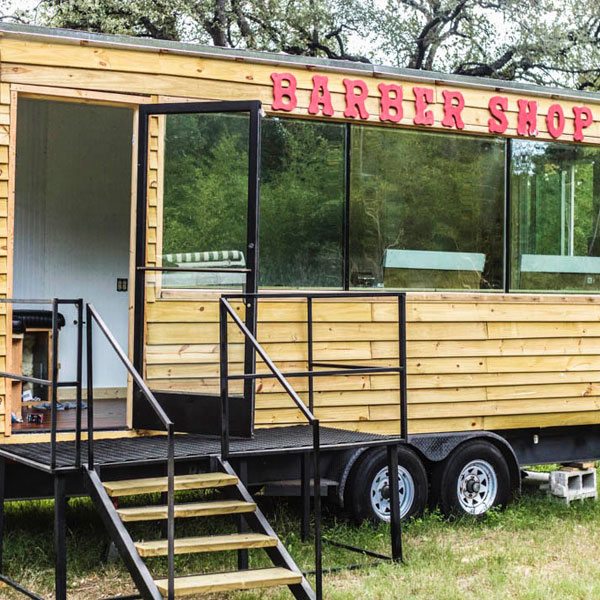
Barber / Hairdresser
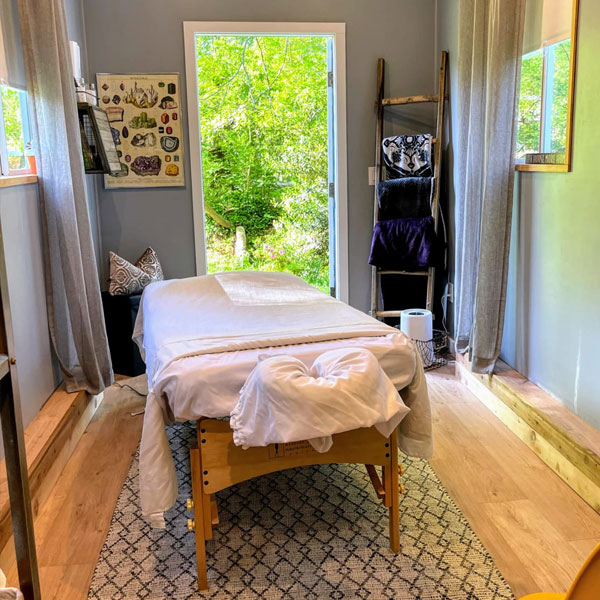
Acupuncture / Massage
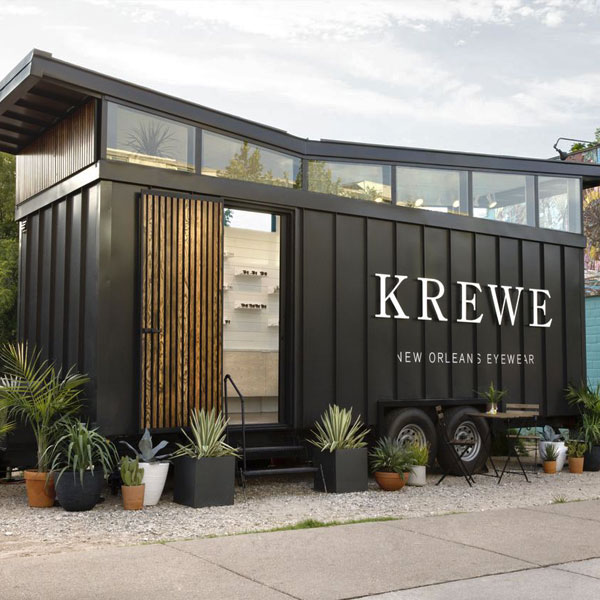
Mobile Clinic
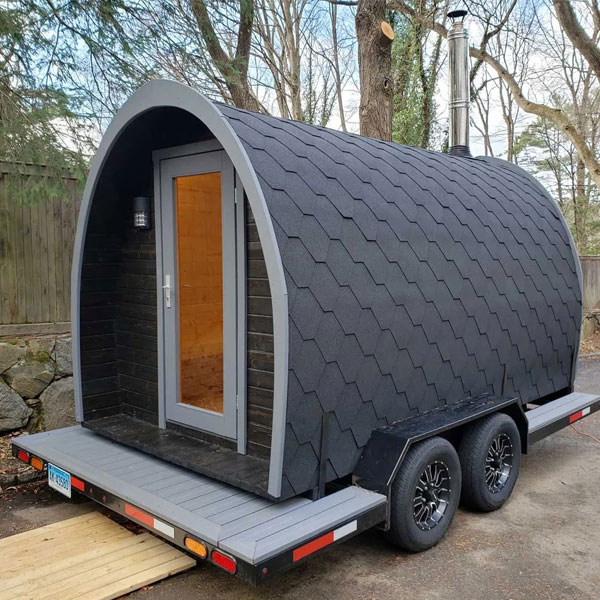
Mobile Sauna
How Will You Market Your Tiny House Business?

Just because you build it, doesn’t mean they’ll come. In fact, they’re not coming — not even one customer — unless you go out and get them.
Here’s the best way to think about this: If you’re trying to make one single sale, you’ll need to have 10 calls with potential customers. To get those 10 calls, you’ll need 100 people to email you inquiring about buying your product or service. To get those 100 emails, you’re going to need 10,000 people to visit your website. To get that kind of traffic to your website, you’ll need to use every trick in the book: social media, email campaigns, paid ads, and paid partnerships to drive those people to you.
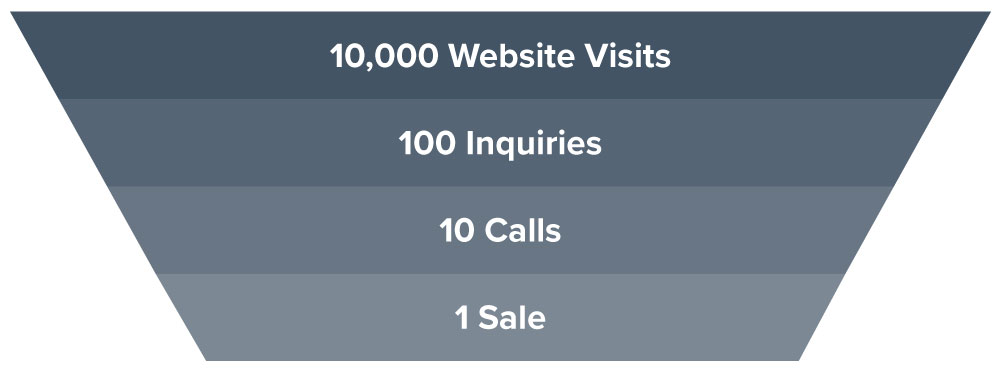
A general rule of thumb here is that each level will convert 1% to the next one. That means to have a lot of sales, you need a lot of attention at the top of your funnel.
That’s where partners like The Tiny Life come in, but more on that soon.
Marketing is typically seen as a series of channels. Channels are just different methods you’ll use to build awareness of your business, then nurture that awareness into sales.
Common Tiny House Marketing Channels
| Channel | Average Cost | Notes |
|---|---|---|
| Paid Traffic | $2.16 per click | Google Ads, Facebook, and Instagram charge per click, typically takes 1,000 clicks per sale |
| Social Media | $4.62 per engagement | Social posts are exposed to less than 5% of your followers unless you pay for exposure |
| Email Marketing | $200–$500 per month | Requires you to have a list of email addresses already |
| Organic Traffic (SEO) | $3,000 per month | Typically requires six months of SEO work before increased traffic is seen |
The challenge with all of these channels is that you might not have the skill set to operate effectively within them, and they’re not cheap when you crunch the numbers.
Even channels like social media that are seen as “free” take time and effort, and those platforms increasingly will not show your posts to potential customers unless you pay them. Long gone are the days when you could post and people would automatically see it — it’s all pay to play now.
What’s more — when you’re a business owner, you have a lot on your plate. You need to focus on what you’re good at and partner with people that are good at other parts of the business.
This Is Where I’ll Make My Pitch
Working with The Tiny Life as part of your marketing can drive customers to your door, bring credible awareness to your company, and get you to your sales goals faster. We’ve done it time and time again with our partners to great effect.
I love talking shop with tiny house business owners. Please feel free to reach out so we can talk about your tiny house business plans or how we might work together! My contact info is in our free tiny house business guide, which you can get here:
Ryan’s Personal Tips For Starting A Tiny House Business


I thought I’d also include some less practical and more personal tips for managing a tiny house business that I’ve picked up over the years. At the end of the day, your mindset and your attitude as a business owner is just as important as checking all the more practical boxes.
Understand The Strengths Of Your Team
Analyzing the strengths of yourself and the people on your team is more important than trying to overcome weaknesses. I can’t stress this enough.


For example, if you have a teammate who is extremely tech savvy, don’t learn computer coding on your own just for the sake of filling every gap and feeling a sense of control over your business. Delegate the tasks that don’t play to your strengths. I promise it will help the whole business run more smoothly.
Welcome Failure, Then Get Back To Work
Being willing to fail is vital. A lot of times, what I see from new business owners is a sense of pressure to do everything right from the very beginning. This is deeply unrealistic. If you don’t give yourself room to fail and practice overcoming dips and obstacles, there won’t be any way to learn and get better as your business begins to expand.


There’s an analysis I love about the difference between pessimism and optimism. The saying goes that the pessimist views challenges as personal and permanent while the optimist views challenges as situational and temporary.
For the pessimist, failure is tied to their identity and feels unresolvable, while the optimist sees failure as specific to a singular mistake that can be overcome in time. Successful businesses are led by optimists who let setbacks roll off their shoulders and start their comeback immediately.
Don’t Forget To Enjoy What You Do
I see too many business owners who forget to give themselves permission to enjoy their work, which is sad to watch. Sure, the entrepreneurial path is no small feat and won’t be all sunshine and rainbows, but you have to stay connected to the parts of the work that you love.
Losing sight of this will suck the joy from your work. You might even realize you’ve been pouring money, time, resources, and energy into something that doesn’t give you life back, which isn’t ideal for anyone.
Best Books For Starting A Tiny House Business


In wrapping up, I wanted to include a few books and other resources that can help you get your foot in the door when starting a tiny house business. When I was starting my business back in 2010, there really weren’t a ton of resources out there in the tiny house world. Thankfully there are many more today.
- What kind of tiny house business do you want to start?
- What tiny house companies will you try to make connections with?

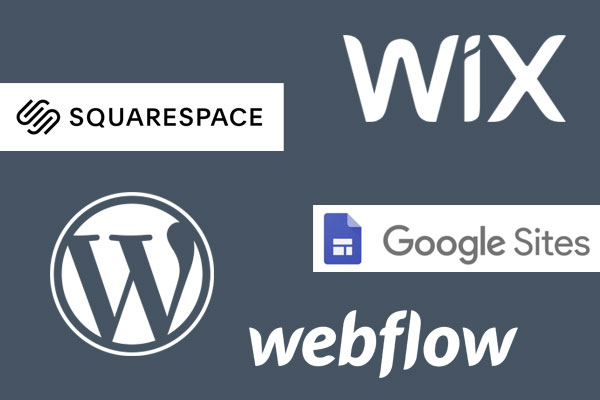





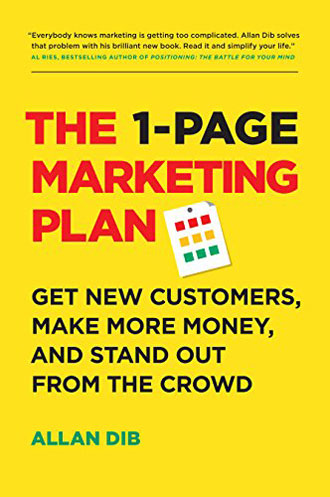
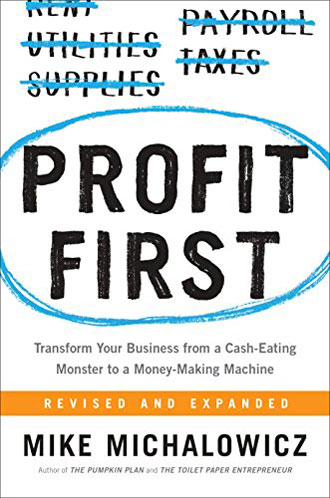
Hi Ryan,
What do you know about Hair Salons in the tiny house movement?
I really enjoy your postings. The Tiny house living is really a
dream. I hope one day it will come true.
Thank you for your informative emails.
Respectively,
Peggy Christianson
Here in the UK the tiny house scene is quite small in comparison to the US. What’s your advise on starting up regarding building first concepts yourself vs outsourcing the builds? I have good hands on experience so was looking at which might make sense. Thank you, your post was very informative.
I love your article so straightforward and articulate. I’m a handyman/ contractor who’s gotten older and now wants to leave a legacy or establish something like tiny homes in my community.
I like your article how to start tiny house business.